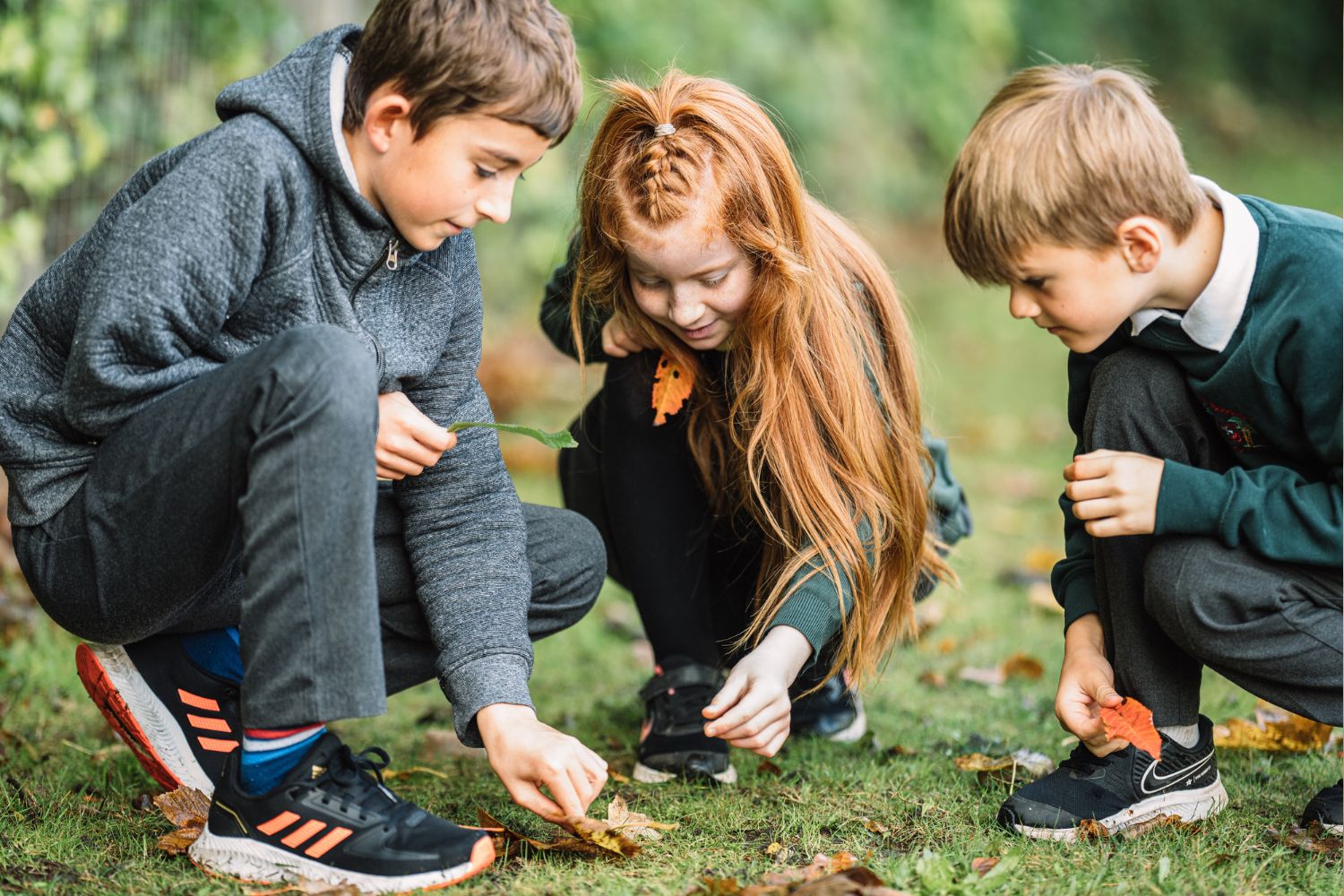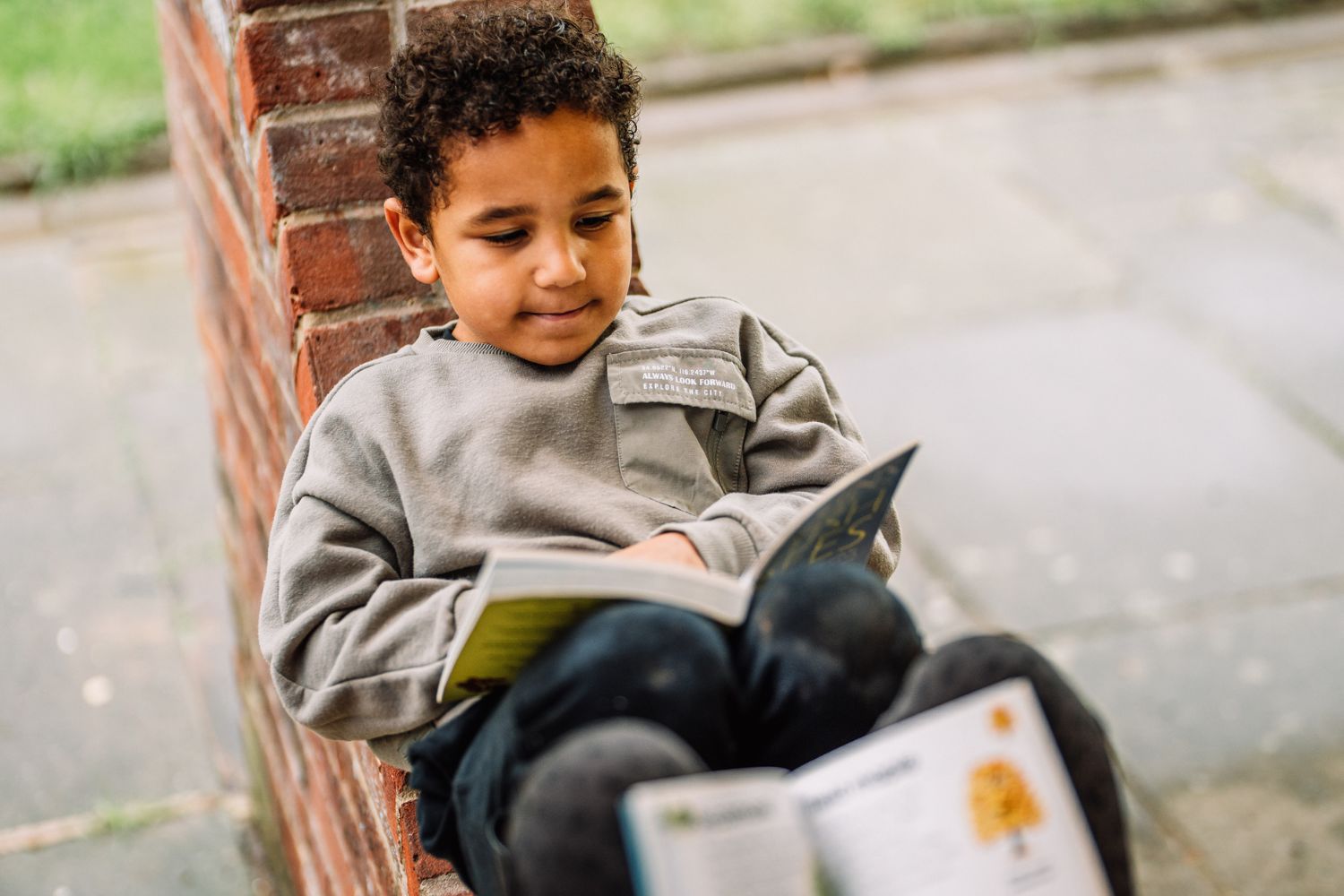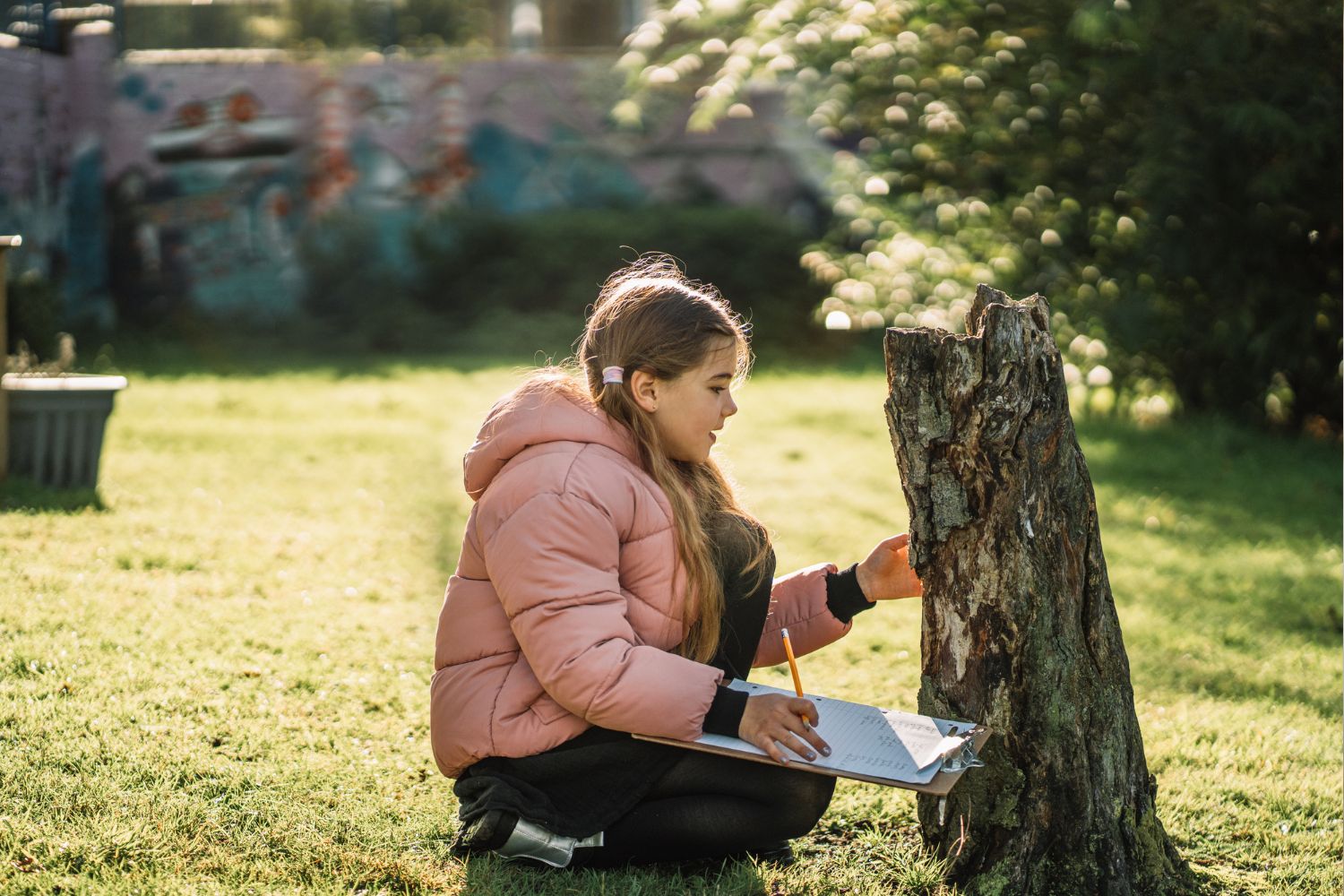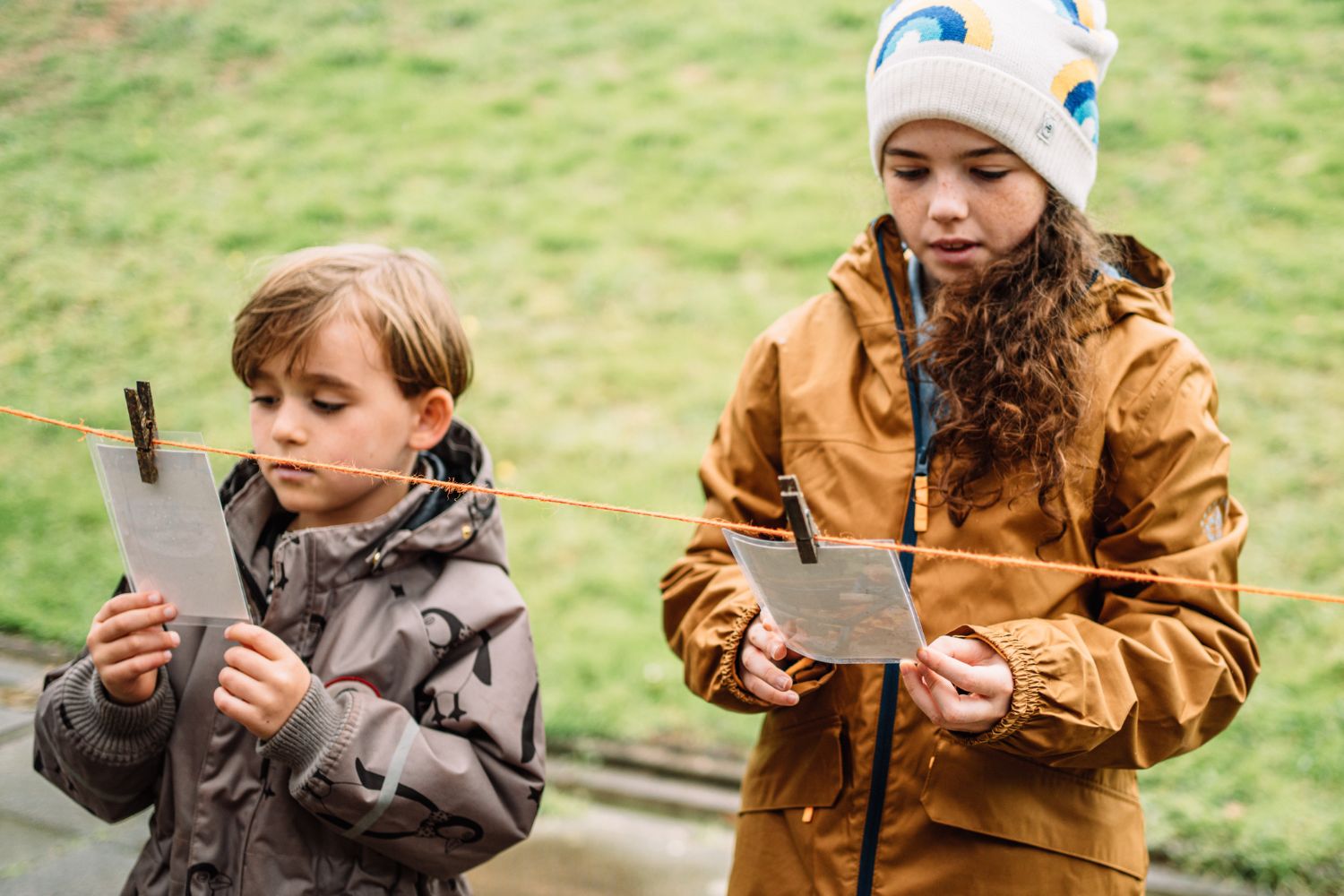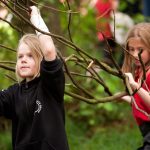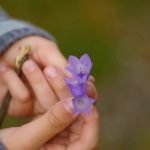How to teach literacy outdoors
Would you love to teach literacy outdoors, but aren’t sure where to start? In this post, we share our lesson ideas and quick tips.
Taking literacy outdoors is a fantastic way to help children feel more relaxed, spark their imagination, and inspire them to engage in their education in exciting new ways. We know that outdoor learning improves child development, supports mental health and wellbeing, deepens nature connection and promotes more inclusive learning. The benefits of outdoor learning truly are boundless!
Sadly, we also know that lack of teacher confidence can get in the way of outdoor learning. As a result, lessons remain confined to the classroom — this is a hugely missed opportunity.
However, knowledge is power. We’re here to share our tips, lesson ideas, and guidance so that you can gain the confidence, focus, and creative direction to teach literacy outdoors.
Why should you teach literacy outdoors?
Taking literacy outdoors adds a deeper, richer level to children’s learning. It can help pupils become more engaged and focused, provide them with independence, and ensure the entire experience feels as enjoyable as possible. The natural world all around us provides a canvas for their imagination to run wild. They get to feel things for themselves — the heat of the sun resting on their shoulders or the sound of birds singing in the trees — that they can funnel into their own storytelling.
Research even suggests that outdoor learning boosts social skills and communication — fundamental skills when it comes to literacy. What’s more, for children who struggle with literacy, learning within real life experiences has been shown to improve vocabulary retention and understanding. Finally, if that wasn’t enough, the work you do outside may even boost engagement inside the classroom!
But how do you actually teach literacy outdoors? What steps can you take to make the leap from indoor to outdoor teaching?
5 outdoor literacy lesson ideas
If you’re new to outdoor learning — or perhaps you haven’t offered it for a while — it can be tricky knowing where to start. We’ve collated almost 200 free outdoor lesson ideas across a range of ages and subjects. Today, we’ve rounded up five of our favourite outdoor literacy lesson ideas for you to try.
1. Crime scene creative writing
The multisensory nature of the outdoors provides novel stimuli which can prompt the formulation of richer ideas and responses, whether in speaking or writing. Evidence shows that children are far more descriptive after time spent in nature, using more vivid language following direct outdoor experience. The crime scene is one potential hook.
All you need is hazard tape, a teddy, chalk, and loose parts — and an outdoor space, of course!
For younger children, a more appropriate prompt may be: ‘How did teddy get stuck up the tree when his picnic is still at the bottom?’ Cue the dramatic music!
Download ‘Crime Scene Creative Writing’.
2. Descriptive alliteration poems
This is a simple but impactful lesson idea which encourages pupils to use alliteration by describing natural objects. All you need is a flat tarmac space and chalk (alternatively, use clipboards, paper, and a pencil); small natural materials like pebbles, twigs and leaves; and a natural space to observe.
From here, encourage children to pick one natural object and observe it. Ask them to note their observations down before turning them into a phrase using the structure: number-adjective-alliteration-noun. For example:
One colourful, bright bird.
Get them to repeat this process with two items, three items, four items etc. Then, bring all of these phrases together and — hey presto! — your pupils have a selection of nature inspired poems.
Download ‘Descriptive Alliteration Poems’.
3. Living books
You can bring a new dimension to children’s reading by recreating scenes from the story outside.
Creating scenes or artwork that relate to your class story can really bring it to life. Using different media and materials can provide new creative outlets for your children. Their created artwork could even be installed at your chosen location!
You could look at other versions of the story — if it has been recreated for film or TV, for example — to see how those versions have portrayed characters and locations. Does that change how pupils imagine things?
For this activity, you’ll need a story book, art materials, natural materials, and scrap or recycled materials. The rest is all down to imagination!
4. Natural phonics
For an active take on spelling, why not use small loose parts to represent sounds in homophones?
This outdoor lesson idea helps children to explore different letters and sounds, and how they are used within words. They can also look at the different meanings associated with each word and its spelling.
Decide on a sound that you want to explore and create a key with the children using natural items to replace sounds. Use chalk to write words on the playground which contain the sounds in the key, replacing the sounds within the word with the correct natural object. Ask the children to guess the words you have written and tell you how to spell them correctly.
This is a useful way to make difficult-to-understand concepts more accessible — plus, you can find everything you need in your playground!
5. Outdoor random story generator
Ideas can come from anywhere, at any time, from any given item. Our ‘Outdoor Random Story Generator’ will let imaginations run loose and prompt questions that can be used to create a story. It doesn’t matter what your setting is like — this will work anywhere!
This is a really great activity for stretching your pupils’ imagination, then taking it further to composing sentences; reading aloud; and listening. This outdoor lesson idea will heighten creativity and confidence.
Download ‘Random Story Generator’.
Quick tips for outdoor literacy
Ready to step away from the classroom walls and out into Mother Nature? Here are some quick tips to get outside:
- Keep it simple — don’t overcomplicate your lessons, or you’ll make things difficult for yourself and your pupils!
- Use as many natural materials as possible — this will strengthen nature connection for pupils and make the process far easier for you.
- Weave your outdoor literacy lessons into your current curriculum — again, make the process as straightforward as you can. Our book, Teaching the Primary Curriculum Outdoors, is a great starting point.
- Explore additional training — if you want to learn how to develop your school grounds so that they’re better equipped for outdoor learning, or if you want to move towards a whole-school approach, training can be a great way to get you there.
For more general advice on taking learning outside, take a look at our top tips for teaching outdoors, chosen by educators from a range of professional backgrounds. Alternatively, discover our ideas for teaching numeracy outdoors.
Training for teaching literacy outdoors
Here at Learning through Landscapes, we offer a range of training for teaching outdoors. In fact, we’ve just launched our new online course, ‘Taking Literacy Outdoors: Early Years’!
Packed with ideas to create play opportunities that support language and literacy skills, you will learn how to use the rich stimulus of the outdoor environment to create spaces and professional practice that encourage conversation, cooperative play, and imagination in young children.
We also offer in-person training for Early Years Literacy Outdoors and Primary Literacy Outdoors. Our courses are active and hands-on, demonstrating simple, low resource activities that you can repeat with your learners.
Don’t forget — with an LtL School membership, you’ll get 50% off our online training courses and 25% off one in-person training course! Sign up to our newsletter for the latest resources and advice on developing outdoor learning, or pick up a copy of our book for the ‘essential guide to teaching and learning outdoors’.


